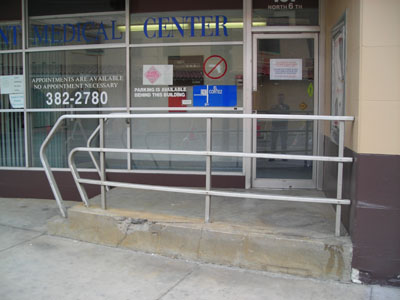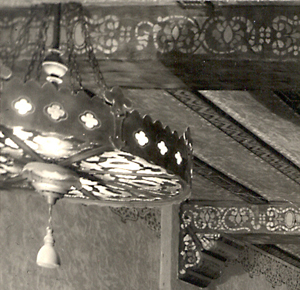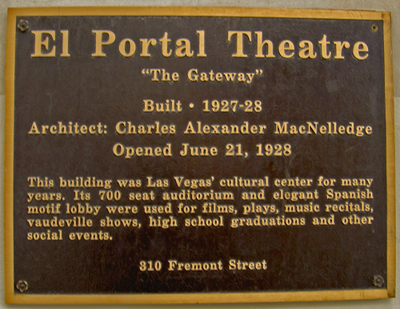On the 61 acres of land that once was home to the rail yards and shops of the Southern Pacific Railroad, Union Park will be built. Mixed use, retail, condos, the Lou Ruvo Brain Institute and the Smith Center for the Performing Arts all promise to change the face of Downtown forever.
Smith Center for Performing Arts
From our good friend Kristen Petersen at the Las Vegas Sun:
Arts Center to mix it up
'Eclectic Architect's Test: Make An Impression In Vegas
By Kristen Peterson, Las Vegas Sun
Architect David Schwarz knew that designing a performing arts center in Las Vegas would challenge his "neo-eclectic" style, given that we've already created architectural nods to Paris, Venice and other European cities.
So what's a guy with a taste for the classical to do ?
Drive to Hoover Dam, look around, consider its relevance to the area's history and make a few sketches.
More than a year after winning the commission for the Smith Center for the Performing Arts, Schwarz and his Washington, D.C., team presented a scale model at the Las Vegas Performing Arts Center Foundation offices on Monday.
The five-acre site in downtown Union Park has architectural elements inspired by noted European concert halls. There's Art Deco in the metal reliefs, outdoor light fixtures and a bell tower - much of it inspired by Hoover Dam structures built in the 1930s.
Known for incorporating classical architecture in contemporary designs, Schwarz was determined to continue with his trademark style but attempted to make the building stand on its own in a city known for pillaging historic architecture.
"It made life more difficult for us than it's been," Schwarz said by telephone from Prague , the Czech Republic. "We try to make our buildings suit their context - context of what is the building, the context of neighborhood, and for us, the context of music.
"What stumped us (in Las Vegas) is that there are two versions of the Paris Opera House" - the outside at Paris Las Vegas and the inside at the "Phantom" theater in the Venetian.
The three-building Smith campus includes a large hall, a small hall and an education complex. The carillon bell tower juts from the northeast corner of the main building and could provide concerts for people in what is, at least tentatively, called Symphony Park. A pedestrian alley leads into outdoor public space, a courtyard between the three structures. The ground floor of the main building has a grand lobby. Above that is an upper lobby that could seat 300 for dinner or serve as reception space. A spacious veranda overlooks Symphony Park.
The design team is testing stone found near Jean. Myron Martin, president of the Las Vegas Performing Arts Center Foundation, says the stone, called Nevada metaquartzite , costs more than limestone but is indigenous and wouldn't need to be transported across county. That could help the building earn a LEED certification from the U.S. Green Building Council, Martin said.
The $250 million main building, with a 2,050-seat performance hall with four-tiered balcony and wood floors , is expected to break ground in 13 months and be completed in mid-2011. The foundation needs to raise $65 million before this can happen.
Part of that money will be raised through naming rights for various parts of the center, including $30 million for the right to name the main concert hall. Naming rights for the 21 exclusive boxes would go for $2 million to $5 million.
Next in line for construction is the $50 million two-story education complex, which includes a 300-seat cabaret theater with windows behind the stage that overlook Symphony Park. The building also includes a smaller theater and rehearsal space. The third structure to be built is a $75 million facility, which houses a 650-seat theater.
The Donald W. Reynolds Foundation, founded by the former Las Vegas Review-Journal publisher, kicked off the fundraising with a donation of $50 million, including $5 million for architectural design. Don Snyder, a former banker and ex-president of Boyd Gaming , is the chairman of the Las Vegas Performing Arts Center Foundation and is in charge of raising funds. He started the Founders Club with $1 million of his own money. The city provided the land and infrastructure and car rental tax money will be used to pay off bonds.
As was anticipated, the building is fancy in a traditional sense. There are two entrances inspired by Theatre des Champs-Elysees.
Its style? Ecclectic.
"We wanted something timeless, elegant, unique but with contemporary elements," Martin said. "It's the perfect blending of old and new Las Vegas."
Because the large hall will take 30 months to build, Martin said, enough money could be raised before the completion for the education center and it's possible they could open at the same time.
The group will be interviewing bell makers in the next few weeks, including foundries in Amsterdam, London and Cincinnati, Martin said.






















